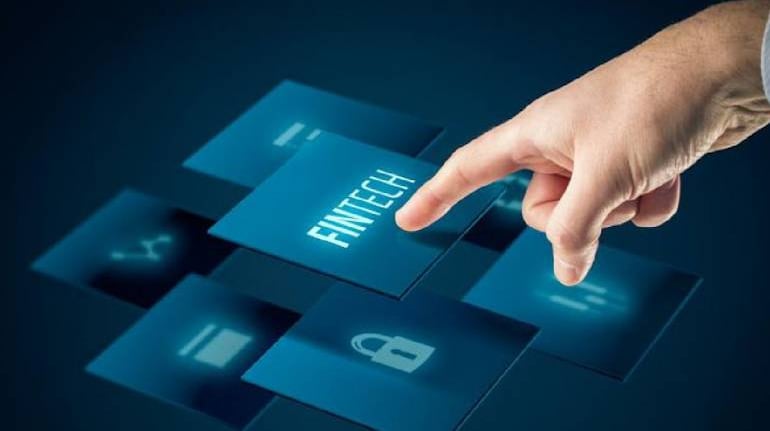CB Insight has revealed Fintech 250 report for 2020 – a list of 250 of the top private fintech companies using technology to transform financial services. According to CB Insight report, this year Fintech cohort has raised approximately $49.2billion in aggregate funding across nearly 900 deals since 2015, which includes startups at different stages of development. Singapore-based technology company Grab is the well-funded company on the Fintech 250 list with the highest funding raised of $9.7billion. Let’s take a look at the highest-funded fintech startups in the world in 2020. (Image: Forbes)
The last few years have seen a massive change in the way consumers have paid each other, paid for goods and services, and transacted online. Moneycontrol looks at the top five innovations, which have had a remarkable impact on the overall ecosystem.
For instance, if QR codes have made business payments easy, IMPS and UPI have made person-to-person fund transfer smooth. Video KYC has helped consumers open bank accounts from the comfort of one’s home.
1. QR Code: Perhaps the biggest innovation in the digital payments ecosystem are QR codes or Quick Response Codes. Originally designed to track industrial products by Japanese firm Denso Corporation, they have come a long way to help identify the beneficiary of any transaction. In India, Paytm doubled down on QR codes as a cheap and alternative mode of transaction to card terminals.
It was the first payment mode which brought Visa, Mastercard, American Express and our domestic card scheme, RuPay, under the same umbrella. Though it was launched with much fanfare, it was slow to take off. Eventually, now, QR codes have been mandated to be interoperable and accept payments from all UPI apps, helping unlock the true potential of these stickers pasted nowadays at almost every shop or merchant location.
2. NFC Card: QR code-enabled digital transactions are contactless but cards would have been either swiped or dipped into PoS terminals, had it not been for NFC technology (Near Field Communication). NFC-enabled card transactions help consumers go contactless, where cards could just be held close to the terminal for a few seconds, and the customer gets identified.
NFC has given a new lease of life to card payments, which are competing with smartphone-based payments for survival. So, merchants who were using PoS terminals could go contactless as well.
Story continues below Advertisement
COVID-19 has pushed the adoption of contactless card payments. In fact, recently the RBI also extended the limit for contactless payments to go through without a pin-based authentication to Rs 5,000 from the current Rs 2,000.
3. Instant Settlements available 24/7: The Indian digital payments ecosystem has benefited massively from instant settlement mechanisms. In India, retail customers can get instant settlements through IMPS (Immediate Payment Service), NEFT (National Electronics Funds Transfer) and UPI (Unified Payments Service).
While IMPS and UPI are run by the National Payments Corporation of India, NEFT is run by the RBI. Along with all forms of retail payments, through RTGS (Real Time Gross Settlement), even large value payments can be settled instantly through the week.
This mechanism gave rise to a vibrant peer-to-peer (P2P) fund transfer industry, where consumers can instantly settle funds with each other, and that too directly into their bank accounts and not any prepaid wallet.
For instance, with the rapid adoption of UPI, wallets lost a large chunk of market share in the P2P segment.
Also, now going beyond only bank-led payments, the NPCI, in a marked innovation, has opened up the rails for partnership with third-party apps, which does not need to be regulated entities. Multiple companies like Google, Cred, MakeMyTrip, and Just Dial joined UPI even without having a prepaid payment licence from the RBI. This brought in customers using these apps into the UPI ecosystem as well.
Today, Google Pay, Amazon Pay, PhonePe, all third party apps share the largest chunk of UPI transactions done across the country.
4. Video KYC: In the banking and financial services world, video KYC will go a long way as a symbol of transformation. Further, COVID-19 has taught even the most traditional institutions the importance of a digital customer onboarding process and video KYC is finding adoption there, too.
What it does is allow the opening of bank accounts and many other services to be done remotely. While players like Kotak Mahindra Bank was one of the first movers in this space, now even HDFC Bank has gone live with video KYC for a host of its services.
Another major impact of video KYC could be digital onboarding of credit card customers and consumer durable loan customers. Previously, the limit for a digital KYC process was Rs 60,000. With video KYC, there is no such limit.
Further, video KYC has also brought a large number of technology-enabled startups which work with banks and other institutions to deploy video-based solutions. Players like IDfy, Signzy, Veri5Digital and others have sprung up, leveraging these guidelines from multiple regulators, helping institutions to deploy these solutions.
5. AePS: While many of the innovations were first deployed in western or Chinese markets and eventually came to India, the country’s very own Aadhaar or a biometric database got leveraged for payments through AePS (Aadhaar-enabled Payment System).
Story continues below Advertisement
The process was simple. Instead of a card or a smartphone, the customer’s biometric would be the authentication mode. This was meant for poor, illiterate or semi-literate and migrant workers who would not need to use any specific payment instrument or bank channels to send money to their family members.
AePS has been leveraged by banks and payment companies to cash out services in far-flung rural areas, where setting up ATMs is not financially viable. Micro ATM devices or small PoS terminals, with biometric readers, could help village folks get cash instantly from their bank accounts.
AePS worked amazingly well for the government's direct benefit transfer, where cash deposited to the beneficiary account could be taken out through biometric identification.




